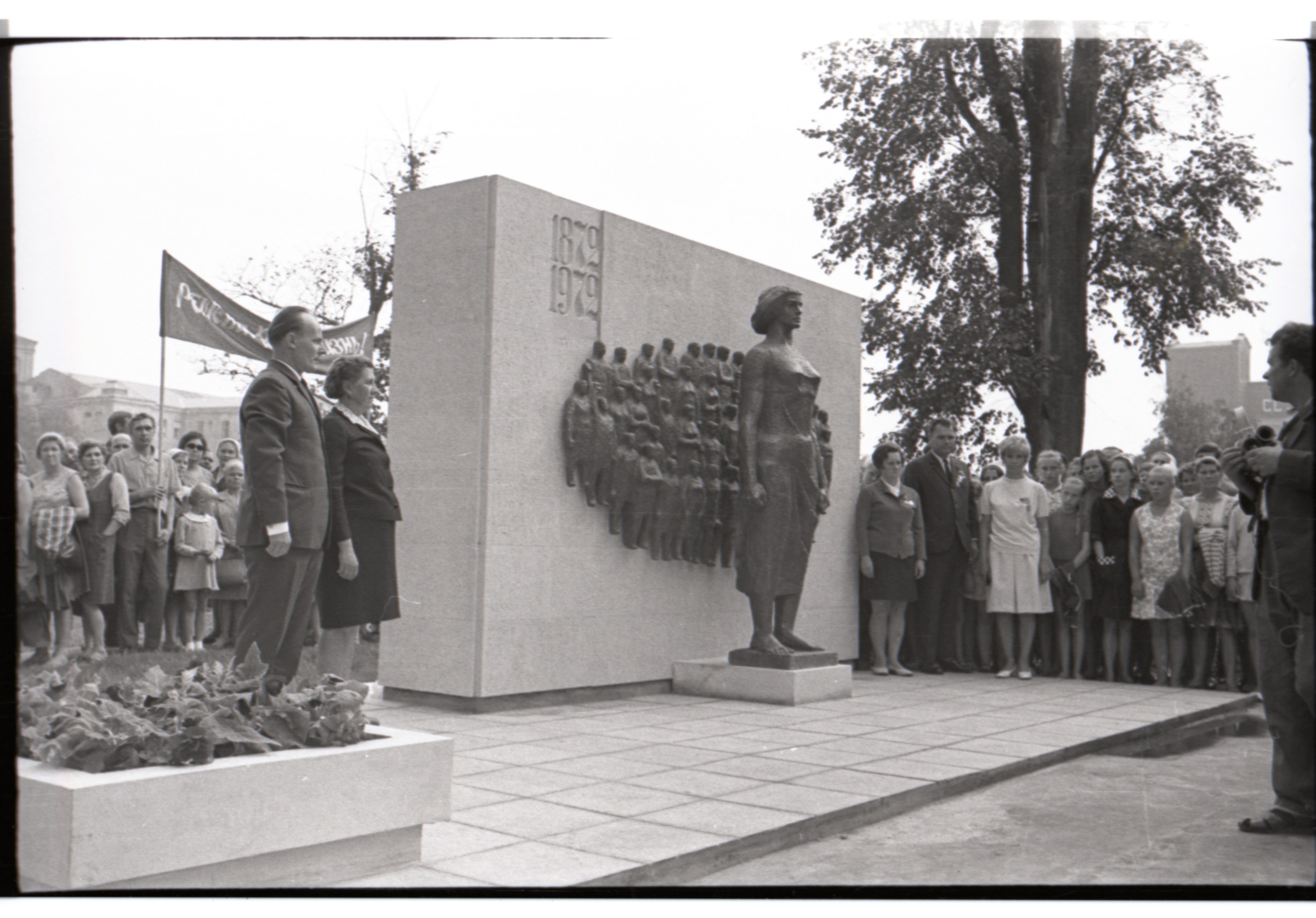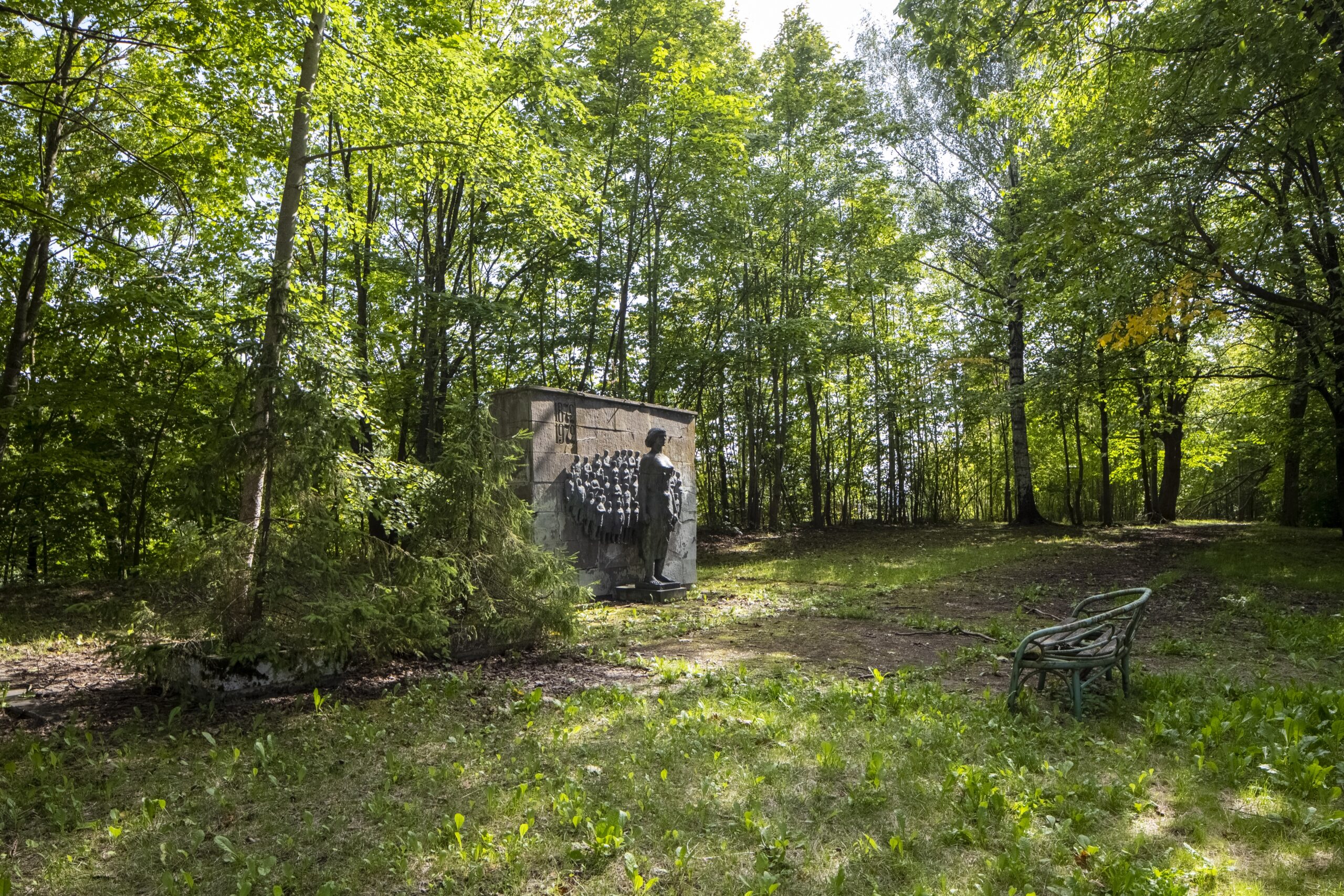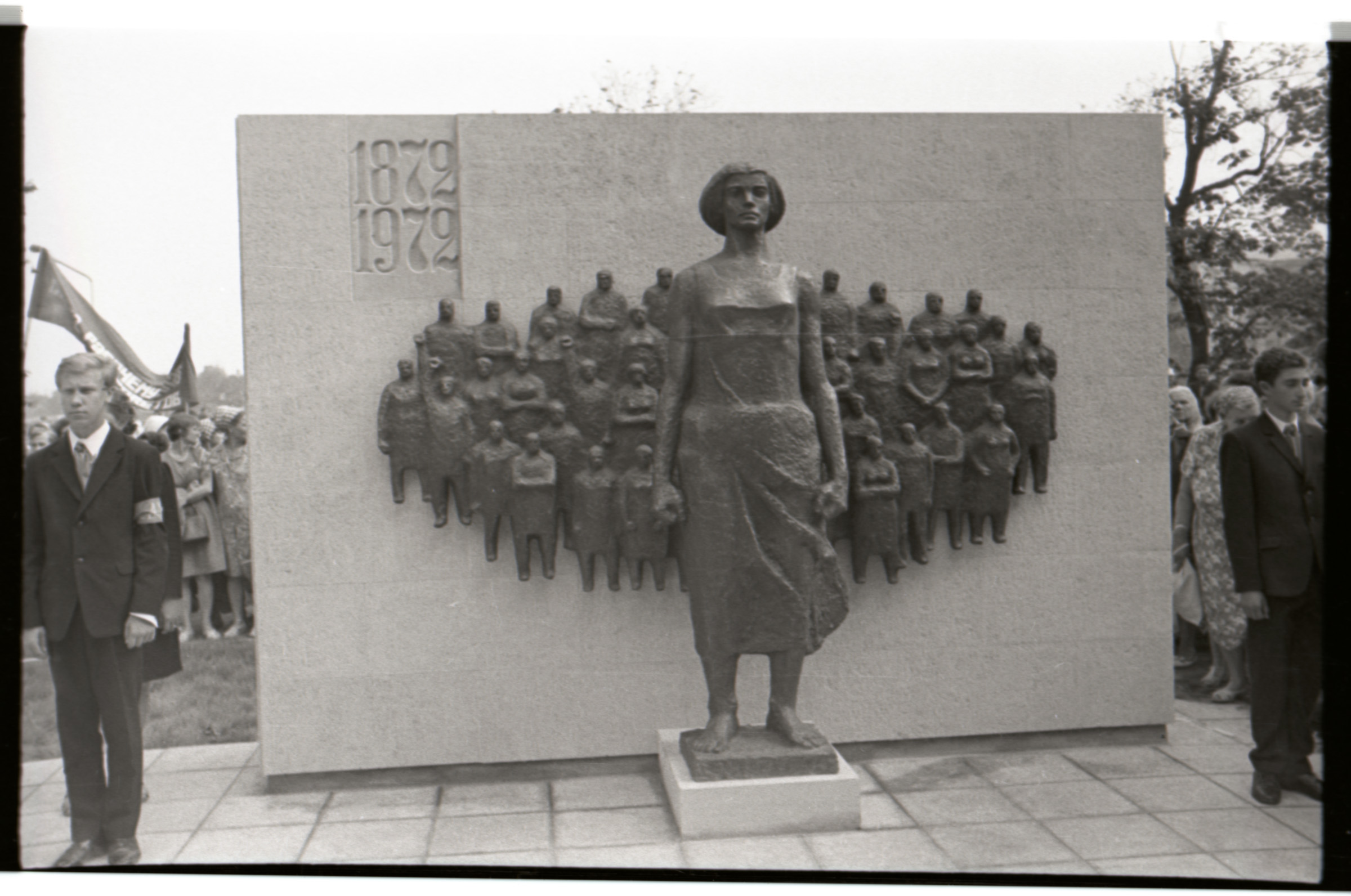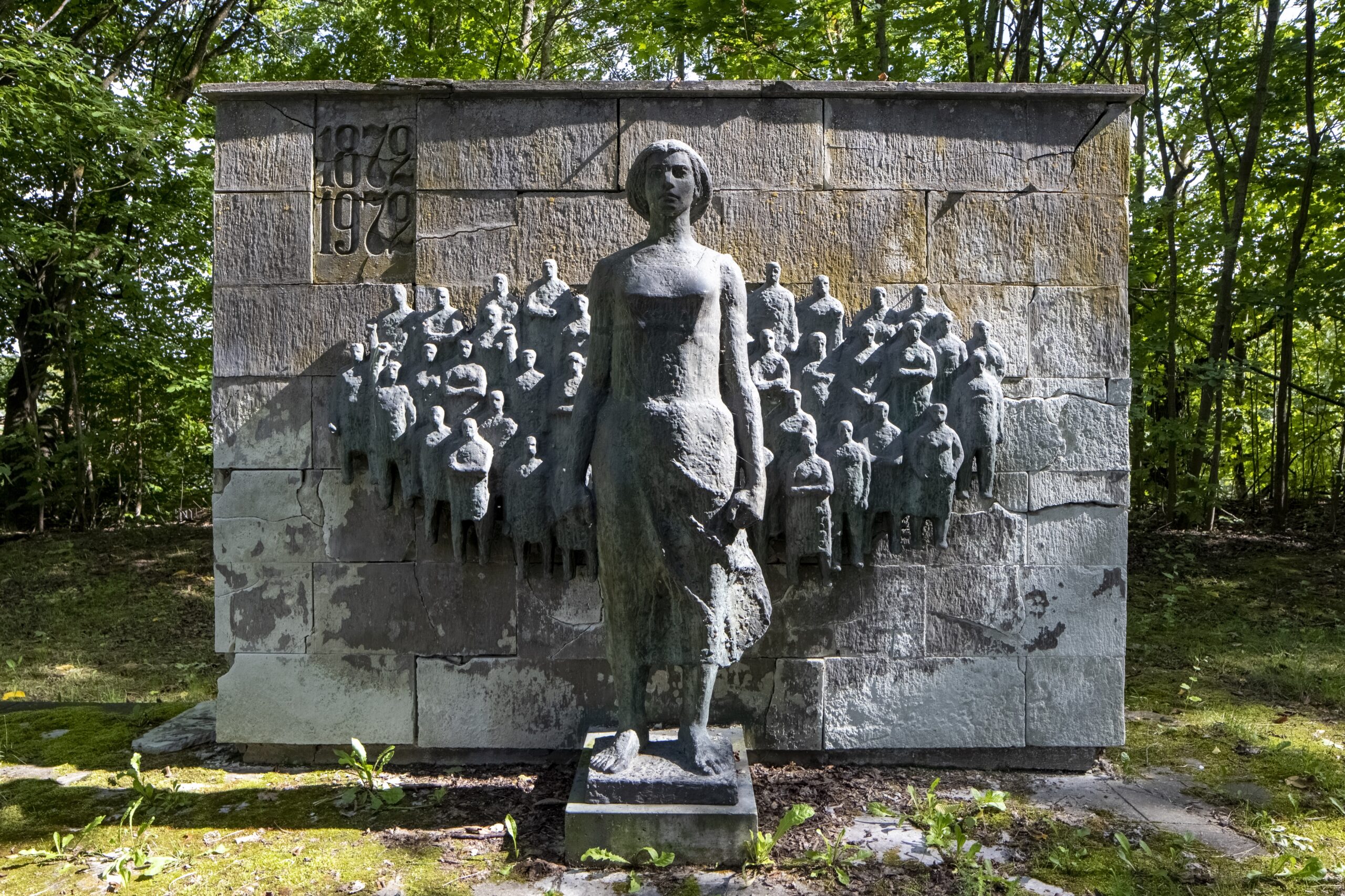Monument for the 1872 Kreenholm Strike
Year of completion: 1972
Address: Ida-Viru County, Narva, Joala St. 17A
Sculptor Kalju Reitel, architect Boriss Kalakin
Not listed as a cultural monument
Being a working-class citizen was held in high esteem in the “workers’ state” that was the Soviet Union. The Soviet working class and its accomplishments were heroized, the selflessness of workers was to be the foundation for moving towards a brighter future – communism. It was also ideologically important to present the suffering and effort of the workers who eventually overthrew the capitalistic Empire and took power into their own hands. Although such an ideology was merely empty words and only held up due to the nationally favoured politics, the pathos with which the workers were praised did enkindle hope for a better future in many of the country’s citizens. Among others, one of the means used to propagate such an ideology was the creation of monumental artworks depicting heroic workers.
One event, the commemoration of which would support the aforementioned ideology, was the strike that took place in the Kreenholm manufacturing company in 1872. With about 500 of the total 4500 workers halting their work due to poor working and reception conditions, the strike was one of the largest workers’ withdrawals in the Russian Empire at the time, and the military had to get involved to suppress it conclusively.
The monument erected for the 100th anniversary of the strike is located next to the pedestrian entrance of the Kreenholm manufacturing company in a forest stand, which masses of workers passed on their daily commute after Estonia was taken over by the Empire. At the forefront of the sculpture is a woman standing in a proud, confident manner. It is placed on a low platform and is only mildly larger than life-sized, helping to amplify a sense of equality and the view of the strikers as completely regular people, just like the workers moving around the sculpture a hundred years later. Behind the woman-figure is a limestone-tile wall, in the centre of which is a cloud-like body of abstract female and male figures. It must be stated, however, that the female worker dominating the foreground can be slightly misleading. During the strike, the Kreenholm factories’ employees were mainly men, who also prevailed among the strikers. A hundred years later during the Soviet Era, however, Kreenholm had inarguably already become a women’s world. Depicting a heroic man would not have been befitting in such a place, especially in Narva, which was strongly considered a women’s town.
The monument has survived in its entirety, and the forest stand surrounding it has been reasonably looked after. The landscaping initially composed meticulously around the monument, however, is lost.
Madis Tuuder










